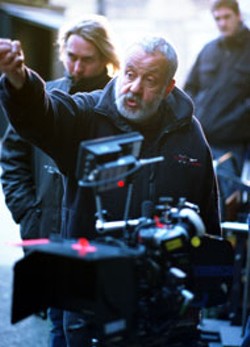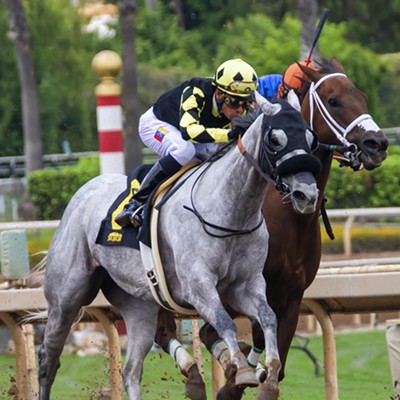Page 2 of 3
In fact, the character Susan, who is from an upper-class family, gets an abortion by having a psychiatrist deem it necessary.
Yes, but the abortion is no easier. If one says, "That is about how easy it is for a rich girl to deal with," that is true, but on the other hand, here is a girl who appears to have everything but doesn't have love or an understanding mother.
Let's talk about how you come up with a story and characters. You don't begin with a script but rather find the film's story through improvisation. Can you explain this process?
Invariably I do publish a script, but in order to make that script I sit down with a tape of the finished movie and transcribe it. A conventional script doesn't actually exist at any stage of the manufacturing process. As with all of my films, months -- in this case, six months -- are spent creating the world of the film, bringing into existence the premise of the material. The only thing that I actually put on paper is the scenario, which is about four pages and only charts the structure in a very provisional way.
How do the actors contribute?
Sequence by sequence, scene by scene, I work from improvisation. Through very rigorous rehearsals, the actors develop finely organized, scripted scenes; which is to say, they know precisely what to say and what to do in the scene, but it never goes through the conventional process of something being written first. Since the script is created through rehearsal, it is implicitly there in what they do.
In Vera Drake, what did you start with?
This particular film had a very simple and inevitable structure. There is a woman who performs abortions and who will be arrested for it. From that, the casting included everyone from nurses, judges, doctors, lawyers, etc., as well as all the central characters. But the job of bringing into existence the characters and investigating their relationships -- all that stuff -- that is what happens in the six months of creating.
How do you cast without a script or specific characters?
In this film, the only actor with whom I shared the premise was Imelda Staunton. Normally, with the exception of Topsy-Turvy, actors agree to appear in my films without any idea of what it is going to be about so that we can maintain total spontaneity during the rehearsal and do improvisations that are completely organic and truthful. The characters in the story plainly don't know the structure and don't know that Vera has been giving abortions, and they only find out when we did a massive improvisation and the cops come in. That was only one month before we shot the film.
Since this film has such a specific historical context, how did you and the others research the film?
I did a lot of research myself and had a researcher who worked on the project for a long time before we started doing it. Everybody involved then researched what they needed to know to make their characters come alive. There are guides down at the Imperial War Museum in South London who were immensely helpful to cast members in helping them construct their characters' journeys through World War II. Sometimes that research is obvious, but a lot of the stuff is hidden in the foundation.
Since this was a period piece, was it difficult getting financed?
We had a three-picture deal with StudioCanal. The producer Alain Sarde had brokered a deal. The first picture was All Or Nothing. It bombed pretty much everywhere, and so they were very reluctant to get involved with the next film, but they were contractually obliged to do so. Plainly it was going to cost more than contemporary films of mine would cost -- period films just cost more. We tried to get more money, but people were not interested. So we decided to take the risk and just be as imaginative as we could and make the film with the original budget, which was about $900,000.
How did you deal with period elements?
With the same resourcefulness that allowed us to make Topsy-Turvy for £10 million ($15 million). Like Topsy-Turvy, there was much we couldn't do, like shots you might otherwise have had of Vera walking down a main street with lots of traffic and all the rest of it. For one, period cars cost £500 a day to hire. If I had all the money in the world, would it have been better? Sure, there would have been shots of her walking down the street with lots of traffic, but finally, as with Topsy-Turvy, you say, "So what, really?" The great thing, as tough as it was, as tight-arsed as it was, was to focus on the dramatic and cinematic elements.
Latest in Cover
Calendar
-

Wine & Paint @ Blackfinn Ameripub- Ballantyne
-

Face to Face Foundation Gala @ The Revelry North End
-
An Evening With Phil Rosenthal Of "Somebody Feed Phil" @ Knight Theater
-
Kountry Wayne: The King Of Hearts Tour @ Ovens Auditorium
-

Queen Charlotte Fair @ Route 29 Pavilion
-
Navigating the thrilling intersection of sports and betting in North Carolina
-
Canuck in the Queen City 7
A Canadian transplant looks back at her first year as a Charlotte resident
-
Homer's night on the town 41
If you drank a shot with the Knights mascot on Sept. 20, you were basically harboring a fugitive












